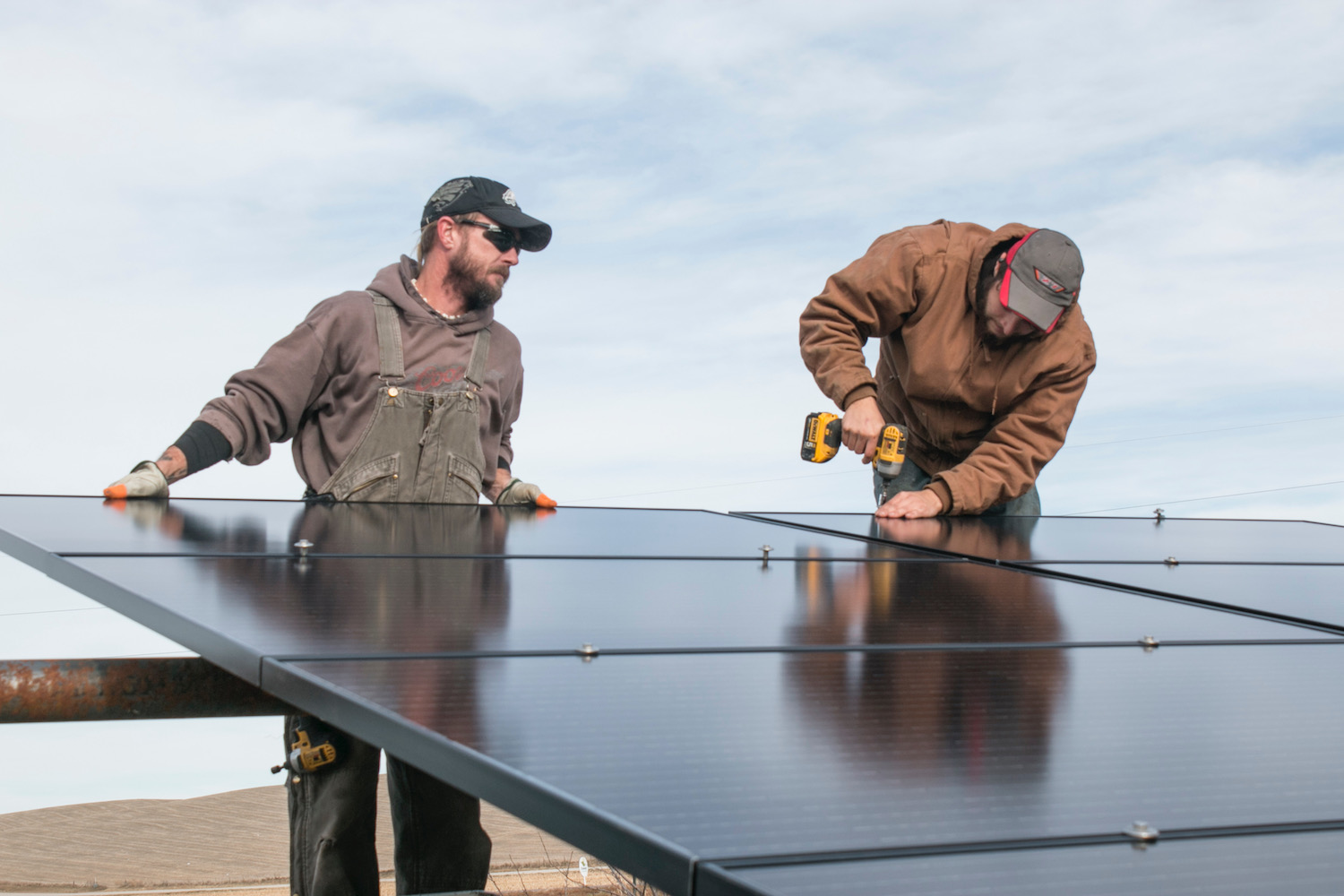'We are a community very much about sustainability'
Nearly 1,000 solar panels installed on Winnebago ReservationBy Kevin Abourezk
@Kevin_Abourezk WINNEBAGO, Nebraska – For the Winnebago Tribe and its people, the battle for sovereignty is taking place in a field near a car dealership and on roofs across their reservation. It’s a battle for energy independence that can best be seen in the black solar panels that the tribe has installed on rooftops and in fields. Since 2008, the tribe has installed nearly 1,000 solar panels. They’ve put them on rooftops, until space became a problem, and recently built a solar farm in a field on the northern edge of the tribe’s reservation. “Our rooftops are jam-packed,” said Robert Byrnes, owner of Nebraska Renewable Energy Systems, who serves as sustainability coordinator for the tribe’s economic development corporation, Ho-Chunk Inc. “There aren’t too many rooftops that are good for solar that don’t have solar.”

He said he began working for HCI more than 12 years ago, when he installed a monitoring system to track energy output for several small wind turbines on the Winnebago Reservation in northeast Nebraska. A few years later, he helped the tribe take advantage of funding being offered to tribes through the 2009 American Recovery and Reinvestment Act (ARRA), the federal stimulus package approved by Congress and signed by former President Barack Obama. Byrnes helped HCI win a $5 million ARRA grant to establish solar energy systems and began installing solar panels on the roof of buildings owned by the corporation, including 24 panels that were installed on the roof of HCI Distribution’s headquarters. That project constituted the first solar energy project for a Nebraska tribe, he said. Today, nearly 300 solar panels have been installed on the HCI Distribution building alone. “It’s impressive,” he said. “It took a while to get there.” Ann Marie Bledsoe Downes, vice president for community impact and engagement for HCI, said the tribe’s various renewable energy efforts are meant to help the tribe become self-sustaining. “We are a community very much about sustainability and being able to provide for ourselves,” she said. She cited the tribe’s food sovereignty initiative, which includes plans for a 4,600-square-foot indoor farmers market, as one example of the tribe’s efforts to achieve sustainability. As another example, she cited the tribe’s plans to take over management of its hospital. “We want to be able to make sure decisions that impact the health and lives of our people, that we have autonomy over those decisions,” she said. She said she’s hopeful solar energy will soon begin driving down retail costs for the tribe’s businesses, allowing the tribe to reinvest that saved money into other endeavors. The tribe has used its own construction company and local contractors to complete its solar energy projects, she said.

Prior to building the solar farm, the tribe’s used car dealership and a nearby tribal convenience store often would struggle with power interruptions as they competed for power, Bledsoe Downes said. “That’s a problem right, when your cash register flickers?” she said. “There are some really practical, positive outcomes from this.” She said the tribe isn’t ruling out creating enough solar energy to power the entire reservation. “There are some infrastructure challenges with that,” she said. “I would never take that off the table.” The tribe’s various solar energy projects have produced nearly 450 megawatt hours of energy and have saved nearly $50,000 in electrical costs. A recent grant from the U.S. Department of Energy helped the tribe increase its renewable energy output four-fold, Byrnes said. The $850,000, two-year grant helped the tribe create the solar farm near the used car dealership. The tribe also is planning to apply for another federal grant that would pay for power storage technology that would allow the tribe to store excess energy for use during power outages, Byrnes said. He said the tribe will have to focus on solar farm development as it expands its renewable energy output since space has run out on top of tribal buildings. “That’s going to be the future,” he said.
Join the Conversation
Related Stories
Leader
of Winnebago Tribe clashes with sheriff over racial profiling (February 27,
2018)Winnebago Tribe sees boost in home ownership as more return to reservation (February 22, 2018)
Frank LaMere: Native people are still fighting for our own rights (February 12, 2018)
Winnebago Tribe moves forward with takeover of troubled hospital (February 6, 2018)
Winnebago Tribe slams raid on businesses as attack on sovereignty (January 31, 2018)
Sacred run raises awareness of missing and murdered Native women (January 31, 2018)
Winnebago Tribe corporation cooperates with federal tobacco investigation (January 30, 2018)
Winnebago Tribe launches HoChunk Harvest food sovereignty project (January 18, 2018)
Winnebago Tribe sees change after veteran comes home and lights sacred fire (January 10, 2018)
Winnebago Tribe sees change after veteran comes home and lights sacred fire (January 10, 2018)
Winnebago Tribe asserts self-determination in hopes of fixing troubled hospital (November 15, 2017)

